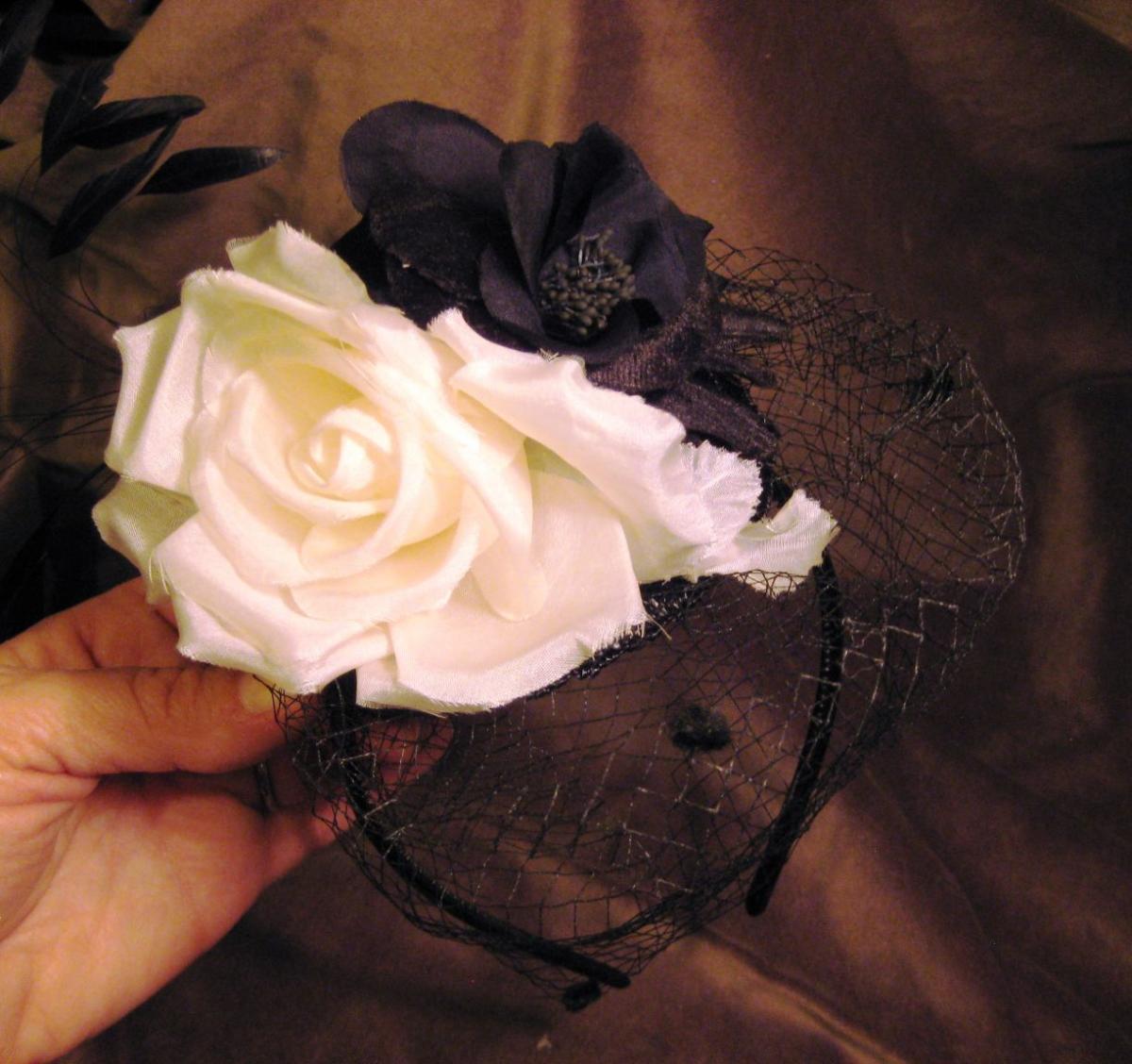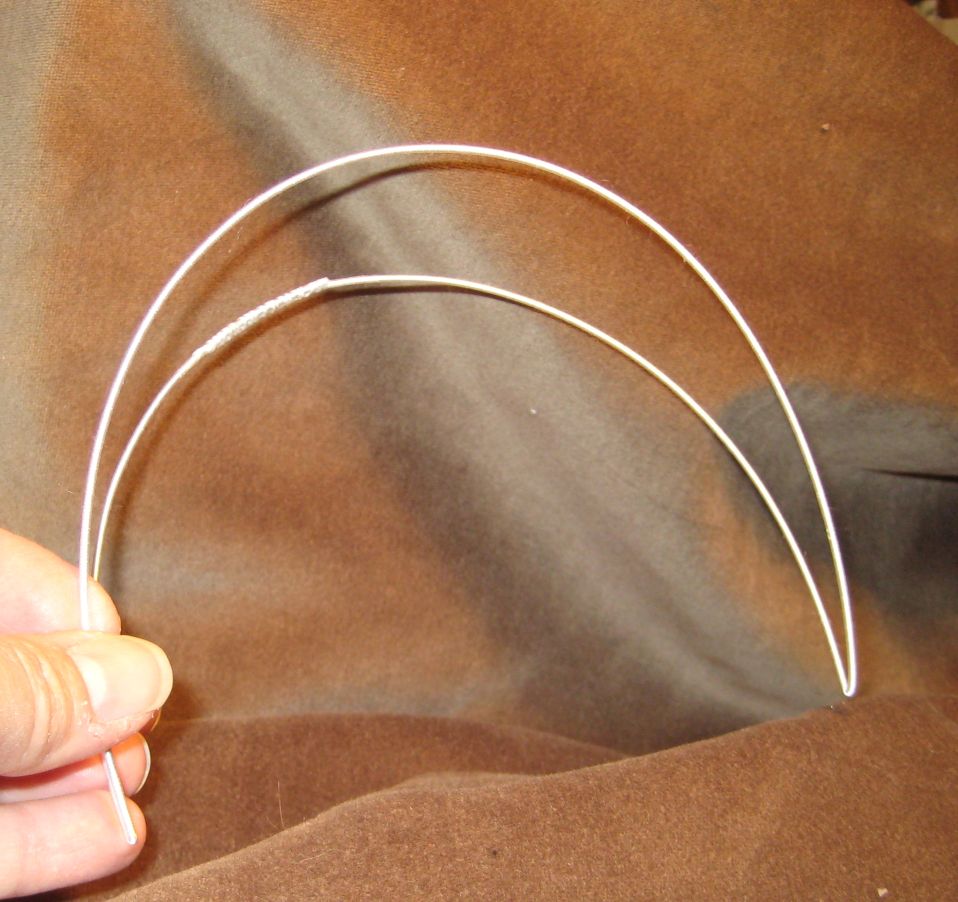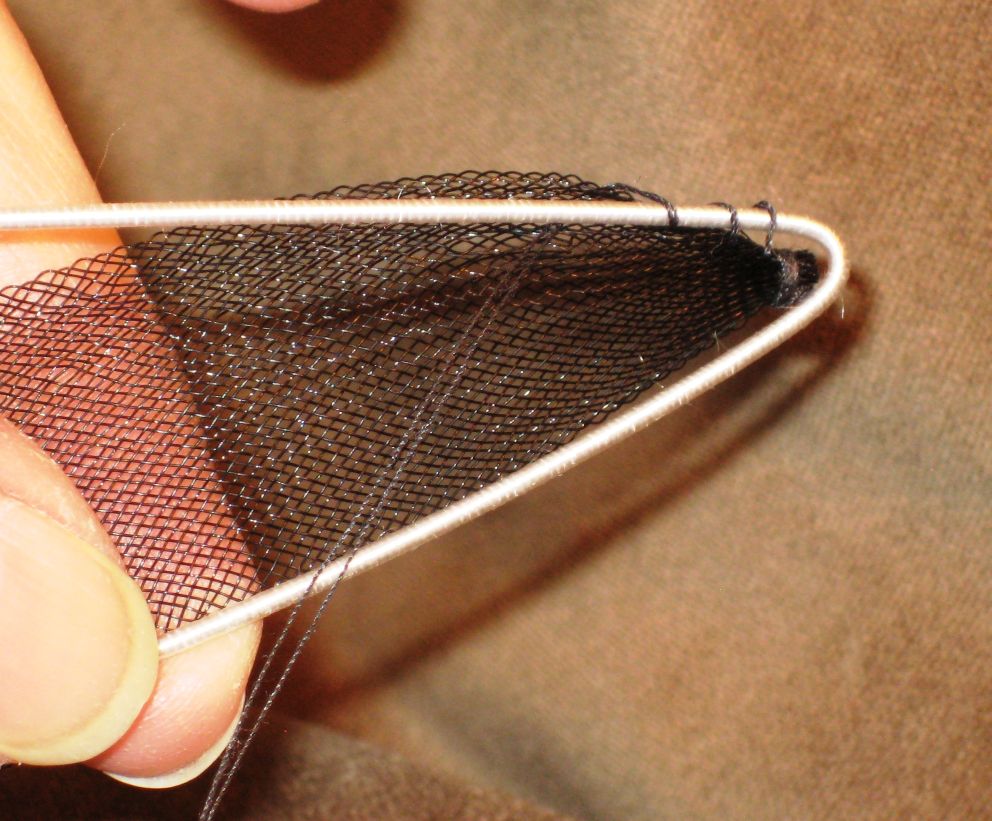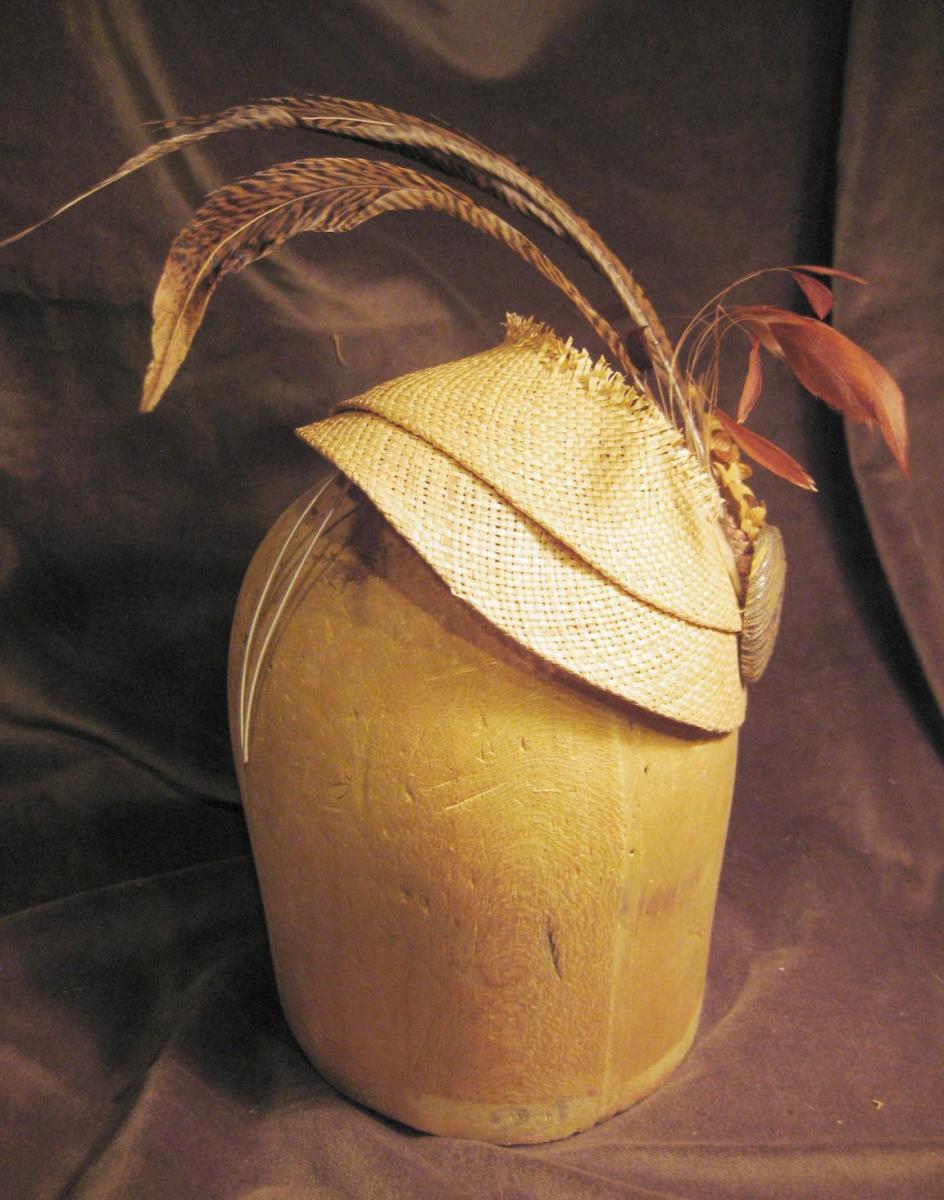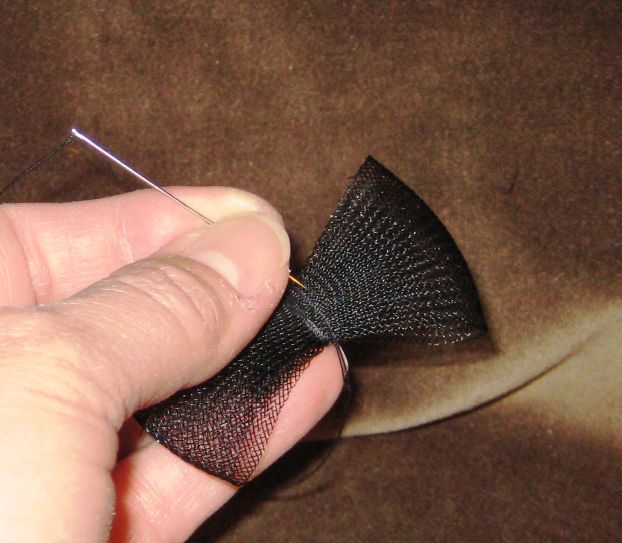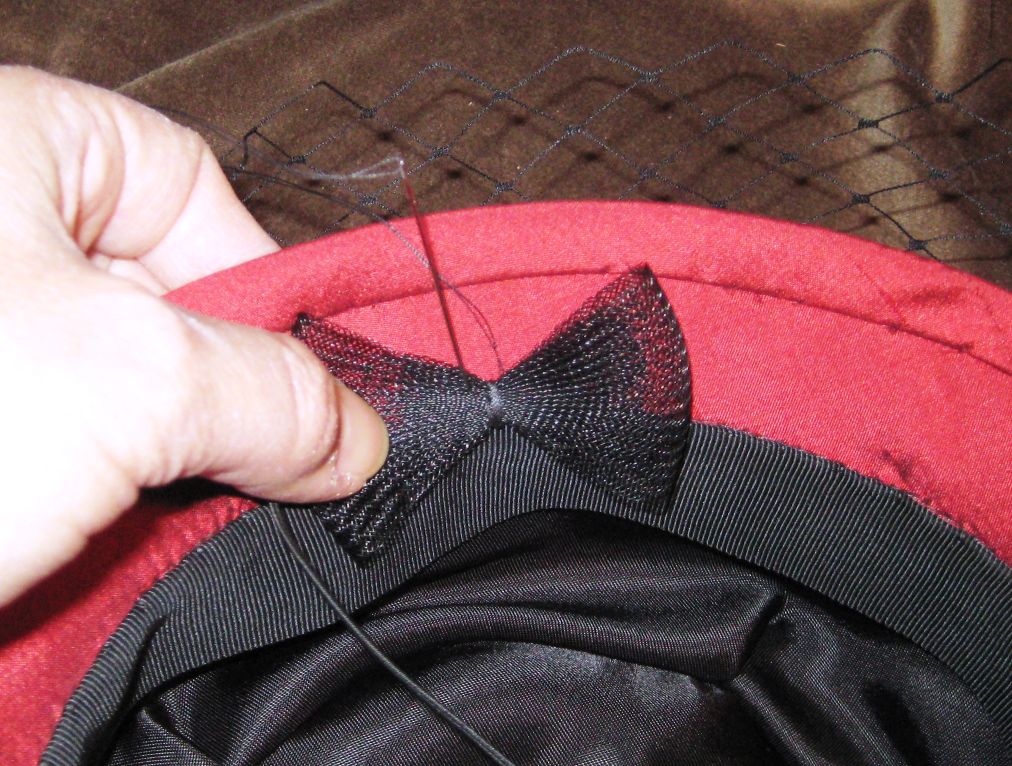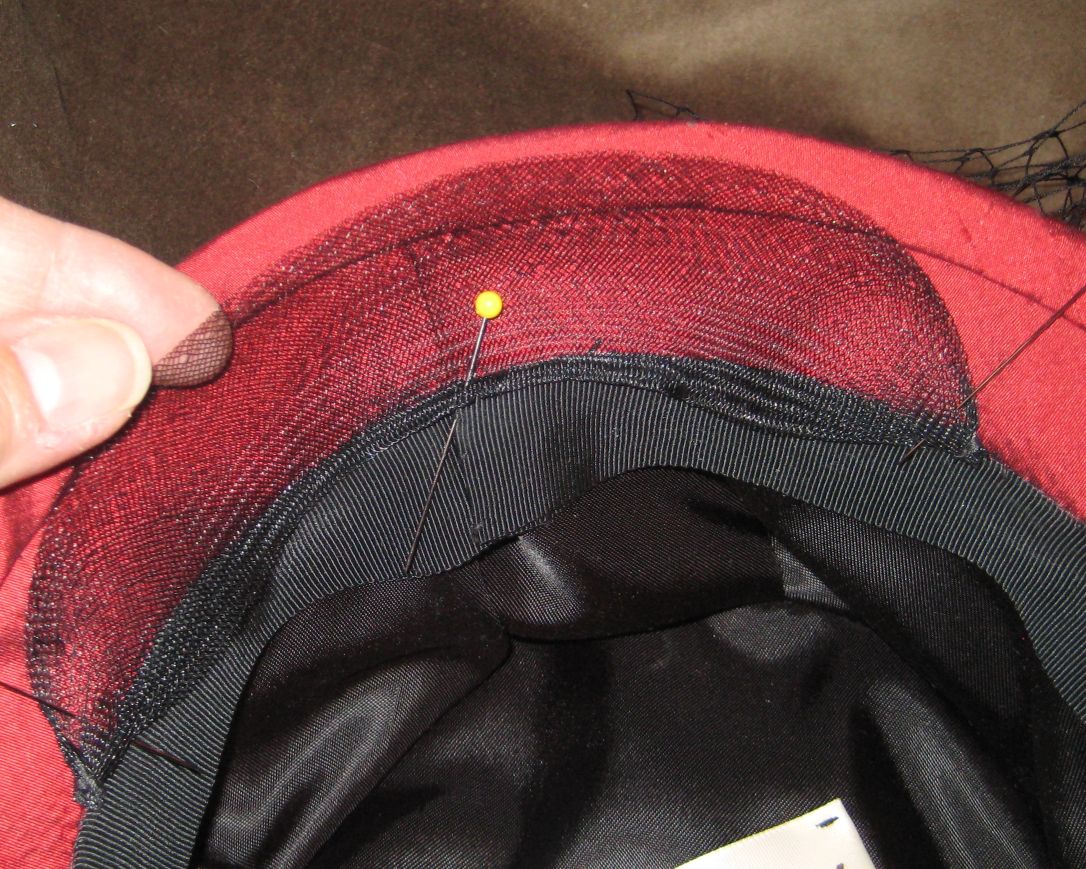4. Headbands
These have become a standard for many milliners as an attachment for fascinators. While their appeal is obvious—a simple, instant attachment with fool-proof placement of the hat on the head—they can still be a bit frustrating. The plastic variety comes in a shape that sometimes doesn’t correspond to one’s head shape (hello, headache.) The metal ones are much better in this respect, as they can be custom-bent to the wearer’s head and shortened if need be. These usually benefit from a hat-or-hair-matching ribbon-wrap.
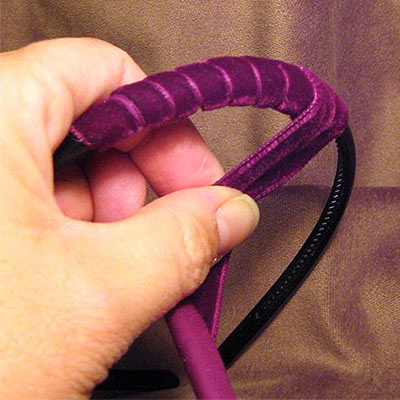
If the fascinator seems to slip too much on the wearer’s head, use velvet ribbon
For a more secure fit, usually for a larger headpiece, I often create my own headband out of millinery wire. Wire headbands can be made any shape and tinted with fabric markers to match hair colors.
If I need extra support with a wire headband, I fill the center with horsehair, so that hairpins can go right through the headband.
Another wire attachment used by a very famous hat maker is what many of us have come to refer to as “The Kickstand.” The Kickstand is a v-shaped accoutrement attached on the high side of a hat designed to be worn at a rakish angle.
The Kickstand, sewn into the head opening under the gros grain band sets the angle and grips the head in order to hold the hat magically in place. Voila!
5. Horsehair
Horsehair and hairpins are an unstoppable combination for holding hats in place. This has been the solution to countless challenging theatrical hat-attachment predicaments. Horsehair can be fashioned into a variety of clever accouterment including—
“The Bowtie”
One of my personal favorite methods of holding hats for the stage in place. It’s both cute and effective. Simply double over a length of horsehair, gather and stitch it together at the center to create a little butterfly shape.
Stitch the center of this piece onto the interior gros grain band of a hat in order to create two attachment points for hairpins. The bowtie is easy to locate inside of a hat, which is great for performers as well as dressers, who often need to change actors’ hats backstage in low light.
“The Bandeau”
Another great accouterment for hat attachment for theatre or real life. To create the bandeau, gather and thread wrap the cut ends of a length of horsehair.
Next, sew one long end into the head size opening of the hat, usually at center back. Now the wearer has an easy to find spot to hairpin the hat in place.
Horsehair bandeaus are also a great place to use a hatpin onstage. Directors just love to use hatpins as props in plays, and who could blame them. There’s no denying the visual appeal of a character sweeping a hat onto her head on stage and securing it in place with some gorgeous pin. But hatpins for costume hats can be problematic. They can be damaging to hats when used over & over in the course of a long-running play. They can also be a stabbing danger to a performer’s head, especially if she is wigged and may not be able to tell where her actual head begins. It is a simple matter for an actor to find a horsehair bandeau in the back of a hat and slide the hatpin through it at a head-safe angle.
This completes Ms. Whitlock’s adventure into keeping hats on heads. I hope you will try some of her techniques and if you do, please post photos of your attempts on our Facebook page.
This article was submitted by Laura Whitlock, Laura Whitlock Millinery. A charter member of Millinery Arts Alliance, Laura Whitlock began her career creating hats for the stage. Her resume includes projects for theatre, film and corporate clients, along with teaching millinery at DePaul University. For over 20 years, Laura has produced her own line of fashion hats, Laura Whitlock Millinery.


